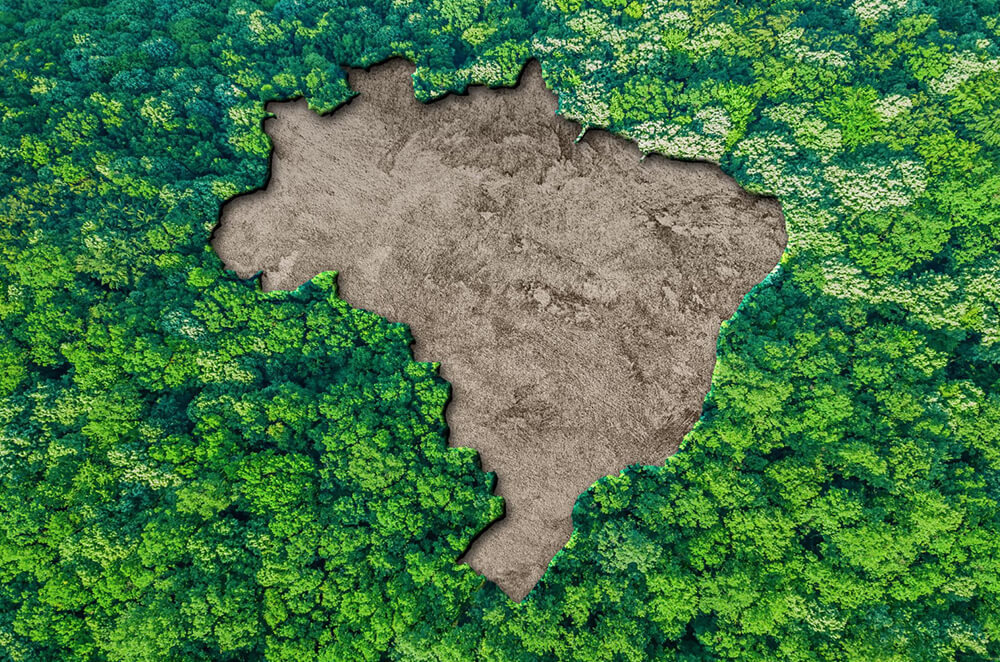
The footprints of climate change in Latin America
Fecha: 22/04/2025
The continent is suffering severe impact due to climate change. To mitigate these effects, a new green economy will be key.
Climate change is leaving its mark on Latin America and is manifesting itself on the continent in the form of heat waves, droughts, extreme weather events and loss of biodiversity. For experts, these effects project an increasingly latent reality: the continent will be one of the areas where the impacts of climate change will be most intense.
However, in the footprints of global warming we can also begin to see the future steps that Latin America can take to mitigate and adapt to climate change.
How is climate change affecting Latin America?
Latin American countries are on the list of those most vulnerable to the effects of climate change. An impact that, according to the Sixth Assessment Report of the United Nations Intergovernmental Panel on Climate Change (IPCC), aggravates economic and social inequalities in the region.
Widespread poverty, problems of access to safe water and sanitation, lack of infrastructure and financing minimize adaptive ability to rising temperatures and lead to new challenges.
High temperatures endanger the Amazon
The Amazon rainforest has been affected by a series of droughts and record temperatures attributed to climate change, the IPCC notes.
2020 overtook 2019 to become the year with the most active fires in the southern Amazon. And the trend is for the situation to worsen in the coming months and for the number of forest fires to rise again in 2022. The footprints of climate change in Latin America
The increased destruction of what’s considered the "world's green lung" was also affected by deforestation. The Amazon River basin, which stretches across nine South American countries and stores 10 per cent of global carbon, has experienced increased deforestation in the last four years due to clearing for cattle pastures and degradation caused by fires.
During the continuous fires, the Amazon ceased to work as a major carbon sink and became a net source of carbon to the atmosphere due to the number of emissions into the atmosphere.
Global warming threatens Andean biodiversity
Rising temperatures have also led to the loss of up to 50 per cent of glaciers in the Andes since the 1980s, the IPCC report says. Glacier retreat and changes in the water cycle, along with land-use change, are affecting ecosystems, water resources and food safety in the area.
One of the most striking transformations is occurring in the habitat distribution of Andean terrestrial species. Rising temperatures are causing them to move to higher altitudes, where the temperature is lower but where there’s also less space as we move upwards. Furthermore, according to experts, of the total number of threatened freshwater species in the world, 35% of them can be found in the Andes.
Ocean and coastal ecosystems in peril
Coral reefs, estuaries, salt marshes, mangroves and sandy beaches are ecosystems that are highly sensitive to the impacts of climate change. Loss of coral cover density, as well as coral bleaching, has been recorded across the continent.
The degradation of these ecosystems directly affects the marine food chain - changes in plankton and macrobenthic communities have been recorded - and with it, the proper functioning of ecosystem services.
In addition, sea levels in the region are rising above the global average. With an average of 3.6 mm per year between 1993-2020, sea level in the Caribbean has risen faster than the global average of 3.3 mm per year. In Latin America and the Caribbean, more than 27% of the population lives in coastal areas, and an estimated 6-8% live in areas at high or very high risk of being affected by coastal hazards.
Rainfall and extreme weather events
Rainfall deficits are particularly severe for the Caribbean region, as several of its territories are on the list of most water-stressed countries. But the effects of the changing water cycle go beyond this. Experts point out that they may be behind some of the extreme weather events we have been experiencing in recent times. In fact, they link the Mexican droughts of 2020 to a weak monsoon in North America and cooler-than-normal sea surface temperatures across the eastern Pacific associated with La Niña.
Latin America's response to climate change
The impacts of climate change present a challenge in terms of mitigation and adaptation. They are an opportunity for countries to invest in sustainable development in an increasingly green international context.
Latin America contributes approximately 8 % of global emissions, according to a recent World Bank report. Unlike most regions, these emissions come largely from agricultural production, particularly livestock, land use change and forestry.
During the Climate Change Conference, many LAC governments committed to reduce their carbon emissions, pledging to cut the use of carbon and reduce deforestation by 2030. What are the main ways to achieve this?
Renewing agriculture through innovation
The first step is to improve the region's capacity to find and adopt new and greener technologies. For example, the incorporation of electric agricultural machinery and equipment, powered by renewable sources, can save millions on fuel and reduce emissions.
It’s important to acknowledge that many adaptation and mitigation technologies also raise productivity.
Climate-smart agriculture, for example, will help countries adapt to changing rainfall patterns through more efficient water use and reduced fertilizers use (avoiding emissions), thus improving the performance of producers.
Latin America, strong in renewable and green energy
According to the World Bank, this region boasts one of the greenest electricity grids and one of the least carbon-intensive economies in the world. Latin America has great potential for renewable energy generation. Argentina, Chile and Mexico are home to large deserts with the ability to install highly productive solar parks.
The Patagonian region is the ideal location for wind power generation. Central America, the Caribbean and parts of South America also have potential for geothermal power generation.
The expansion of renewable energy in Latin America could be an important catalyst for the development of green hydrogen as an alternative energy source and potential export.
Green hydrogen can be seen as a way to "store" intermittent renewable energy. Eventually, it could be used as fuel for electrified ships, planes and other hard-to-electrify means of transport. Similarly, it could also be used to decarbonize industries such as steel and cement, which show the same problem.
Biodiversity protection
One of Latin America's main advantages in terms of climate change is its high level of natural capital. It has more than a quarter of the world's forests, one of the highest levels of freshwater resources and about half of the world's biodiversity. Managing these resources is crucial for slowing global climate change, and also for the region to keep its dominant position in food and agricultural products.
Reforestation and restoration of degraded lands can help ecosystems adapt and reduce emissions. The World Bank notes that they can also generate jobs and develop new sectors, especially those related to sustainable forestry. Planting new forests, reversing deforestation and reclaiming degraded land can help keep water, protect against heavy rainfall events, prevent soil erosion and improve overall soil productivity.
Climate change in Latin America is already leaving its mark. It’s in our hands to reverse it. It’s time to act, to promote renewable energies and to develop innovations that achieve sustainable and fair development for all.
Sources:
https://openknowledge.worldbank.org/bitstream/handle/10986/37244/9781464818677-ES.pdf
https://www.ipcc.ch/report/ar6/wg2/downloads/report/IPCC_AR6_WGII_FinalDraft_Chapter12.pdf
https://news.un.org/es/story/2021/08/1495582
